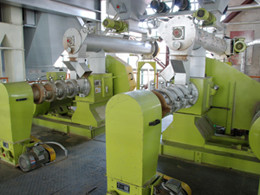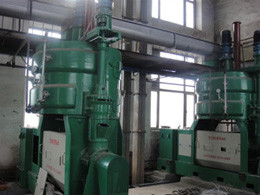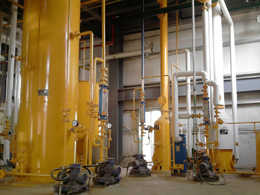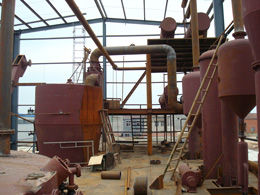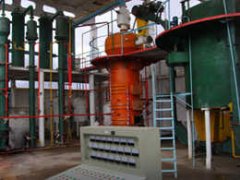Soybean Oil Production
There are two methods of soybean oil production, one is mechanical way, which is a traditional method that use screw press machine to squeeze oil out from seeds and kernels; the other way is chemical method that extract oil with solvents. Both two oil production methods have advantages and disadvantages. The previous one is natural and healthy but the oil yield is much lower, however, oil yield of the solvent extraction method is much more higher. You can choose one according to the capacity and your oil making needs, or you can use the two together.
To produce soybean oil, the soybeans are cracked, adjusted for moisture content, heated to between 60 and 88 ºC (140–190 °F), rolled into flakes, and solvent-extracted with hexanes. The oil is then refined, blended for different applications, and sometimes hydrogenated.
Soybean Oil Production Process
The production of commercial soybean oil is complicated. Below are the main steps of the soybean oil production process.

Cleaning Section of Soybean Oil Production: The soybeans are first cleaned, dried and dehulled prior to oil extraction. The soybean hulls needs to be removed because they absorb oil and give a lower yield. This de-hulling is done by cracking the soybeans and a mechanical separation of the hulls and cracked soybeans. Magnets are used to separate any iron from the soybeans.
The soybeans are also heated to about 75°C to coagulate the soy proteins to make the oil extraction easier.
Extraction Section of Soybean Oil Production: First the soybeans are cut in flakes which are put in a percolation extractors and immerged with a solvent, normally hexane. Counterflow is used as extraction system because it gives the highest yield. After removing the hexane, the extracted flakes only contain about 1% of soybean oil and is used as livestock meal or to produce food products such as soy protein. The hexane is separated from the soybean oil in evaporators. The evaporated hexane is recovered and returned to the extraction process. The hexane free crude soybean oil is then further purified.
Solvent Extraction Workshop View:
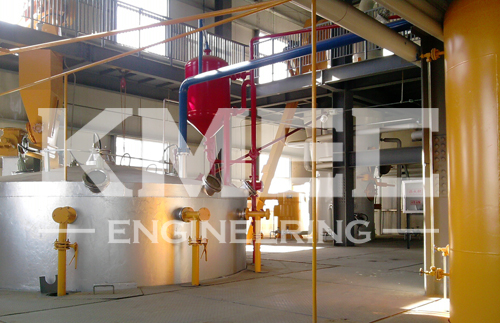
Purification Section of Soybean Oil Production: The crude soybean oil still contains many oil-insoluble and oil-soluble impurities that needs to be removed. The oil-insoluble material are removed with filtration and the soluble materials is removed with different processes including degumming (removing of phosphatides), oil refining (washing with alkaline solution to remove free fatty acids, colorants, insoluble matter and gums) and bleaching (with activated earth or activated carbon to remove colour and other impurities.
Refining Workshop View
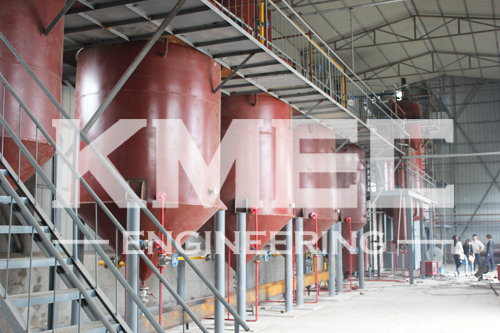
Hydrogenation Section of Soybean Oil Production (optional): This process will increase the stability of the soybean oil and will make it less liquid. However, this process will create more saturated fats and will reduce the favorable unsaturated fats. In addition, transfats are produced which can cause hearth problems. Hydrogenated soybean oil is used in foods that require more solid fat such as margarines.
What is Soybean Oil?
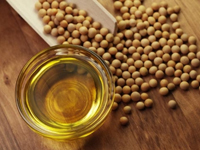
Soybean oil is a vegetable oil extracted from the seeds of the soybean (Glycine max). It is one of the most widely consumed cooking oils.
Soybean oil can be considered a healthy oil, provided that it's not been hydrogenated and provided that it's certified organic. The bottom line with soy oil—and with all components of your diet—is that it is important to determine what's best matched for your individual health needs and cooking plan and then insisting on the highest quality food to meet those needs.
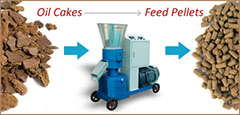


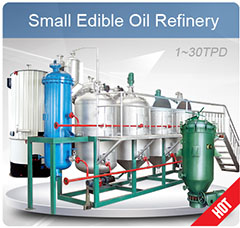
Want to set up a mini mustard oil mill of your own ? With the rapid ...
Mustards are part of the oilseed family and are regarded both as a s...
Interested in begin a small size corn oil extraction plant but dont ...
Do you want to make the edible rice bran oil at from using your mill...

